
Super Mario Kart is a kart racing game developed and published by Nintendo for the Super Nintendo Entertainment System (SNES). The first game in the Mario Kart series, it was released in Japan and North America in 1992, and in Europe the following year in 1993. Selling 8.76 million copies worldwide, the game went on to become the fourth best-selling SNES game of all time. Super Mario Kart was re-released on the Wii's Virtual Console in 2009, on the Wii U's Virtual Console in 2013, and on the New Nintendo 3DS's Virtual Console in 2016. Nintendo re-released Super Mario Kart in 2017 as part of the company's Super NES Classic Edition.

Chocobo Racing is a racing game developed by Square Co. for the PlayStation, and part of the Chocobo spin-off series. It was released in Japan in March 1999, followed by North America and Europe in August and October, respectively. The game's star and namesake is the Chocobo, a Final Fantasy series mascot. Other figures from that series, such as Mog the Moogle, the Black Mage, and Cid, fill out the all-Final Fantasy cast. Most of the game's soundtrack is composed using songs from previous Final Fantasy titles. As a formulaic kart racer, Chocobo Racing is often compared to Mario Kart and Crash Team Racing.
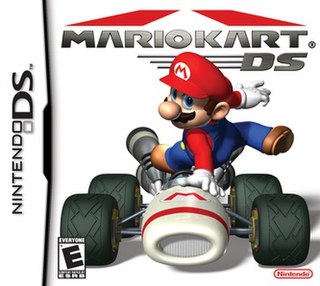
Mario Kart DS is a 2005 kart racing video game developed and published by Nintendo for the Nintendo DS handheld game console. It was released in November 2005 in North America, Europe, and Australia, and on December 8, 2005, in Japan. The game was re-released for the Wii U's Virtual Console in North America and PAL regions in April 2015 and in Japan in May 2016.

Crash Team Racing is a 1999 kart racing video game developed by Naughty Dog and published by Sony Computer Entertainment for the PlayStation. It is the fourth installment in the Crash Bandicoot series. The game's story focuses on the efforts of Crash Bandicoot, Doctor Neo Cortex, and other ragtag team of characters in the Crash Bandicoot series, who must race against the egomaniacal Nitros Oxide to save the Earth from destruction. In the game, players can take control of one of fifteen Crash Bandicoot series characters, though only eight are available at first. During the races, offensive and speed boosting power-ups can be used to gain an advantage.

NASCAR Thunder 2004 is a racing simulator by EA Sports, released on September 16, 2003 and available in separate versions for PlayStation, PlayStation 2, Xbox, and Windows. It features the 2002 champion Tony Stewart on the cover with a scowling look to represent the new Grudges and Alliances feature. It was the only game as of 2002 to feature the previous Winston Cup Champion on the cover. The game had the most extensive soundtrack of the series up from four songs from the previous game. The game also has a career mode, season mode, Lightning Challenge mode, SpeedZone, as well as a tutorial mode featuring Richard Petty. The game is an EA Sports Bio game, and is compatible with other EA Sports Bio games like Madden NFL 2004 and NCAA Football 2004. It is considered by many as the greatest NASCAR game of all time. This was also the last NASCAR game for the PlayStation.

Need for Speed II is a racing video game released in 1997 for PlayStation and Microsoft Windows. It is a part of the Need for Speed series and is the second installment, following The Need for Speed.

Need for Speed: High Stakes is a 1999 racing video game developed by EA Canada and EA Seattle and published by Electronic Arts for the PlayStation and Microsoft Windows. It is the fourth game in the Need for Speed series and a follow-up to Need for Speed III: Hot Pursuit. The game features more realistic elements than its predecessors and introduced a damage system that allows cars to take damage when colliding with objects, affecting their appearance and performance. It also introduced a series of economy-based tournaments, awarding players with a cash prize that can be spent on repairing, purchasing, or upgrading cars for subsequent races. The game's Hot Pursuit mode, which was introduced in Hot Pursuit, was expanded with more options, allowing players to control police pursuits attempting to stop racers.
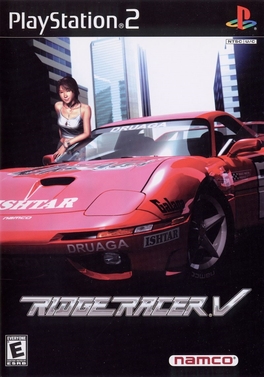
Ridge Racer V is a 2000 racing game developed and published by Namco for the PlayStation 2, as a launch game for that platform. It is the fifth title of the Ridge Racer series succeeding Ridge Racer Type 4 and was followed by Ridge Racer 6 in 2005. The game received a home-to-arcade port named Ridge Racer V: Arcade Battle.

Lego Racers is a Lego-themed racing video game developed by High Voltage Software and published by Lego Media in 1999.

TOCA: Touring Car Championship is a 3D racing video game licensed by series organisers TOCA, and developed and published by Codemasters for the PlayStation and Microsoft Windows platforms in 1997-1998. It was re-released by Codemasters for the Game Boy Color in 2000. It was the first entry in the eponymous series and was followed by TOCA 2 Touring Cars in 1998. The player takes control of a driver who races for one of the eight works teams that contested the 1997 British Touring Car Championship against fifteen AI competitors on one of the nine championship circuits. A championship mode is available for players with the objective of earning points to continue competing and unlocking new features.
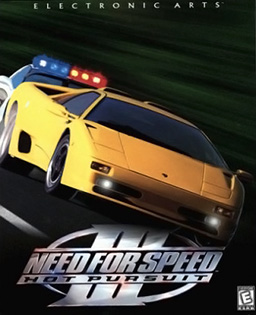
Need for Speed III: Hot Pursuit is a 1998 racing video game developed for PlayStation by EA Canada and Microsoft Windows by EA Seattle, and published by Electronic Arts. It is the third major installment in the Need for Speed franchise, incorporating police pursuits as a major part of gameplay. Hot Pursuit remains focused on racing using exotic sports cars, but features races that primarily take place in locations within North America, including varied settings and climates. Police AI is improved over the first game, utilizing several tactics to stop both the player and opponent. The PlayStation version was released on March 25, 1998, while the Windows version was released on October 12 the same year. The game received critical success, with praise for its graphics and customization options. It received a direct sequel in 2002 and a reboot in 2010.
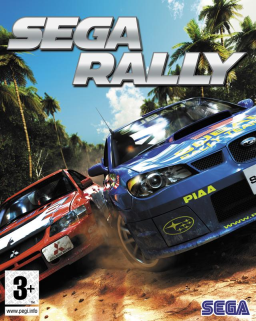
Sega Rally Revo is an offroad racing video game, the fourth installment of the Sega Rally series. The game was released for PlayStation 3, PlayStation Portable, Xbox 360 and Microsoft Windows in 2007. The game's title is "Revo" as Sega intends it to be a revolution in rally racing games. The game was developed simultaneously with Sega Rally 3.

Need for Speed: Carbon is a 2006 racing video game and the tenth installment in the Need for Speed series. Developed by EA Black Box, Rovio Mobile and published by Electronic Arts, it was released on October 31, 2006, for the PlayStation 2, PlayStation 3, Xbox, Xbox 360, GameCube, Windows, and Mac OS X, and on November 19, 2006 as a launch title for the Wii and in 2008 for arcade cabinets. The game sees players conducting illegal street races within the fictional city of Palmont City, with the game's main story taking place after the events of Need for Speed: Most Wanted and focusing on the player's character taking control of the city from various street-racing gangs. While the gameplay is similar to its predecessor, Carbon introduced a number of new features, including crews and racing wingmen, Touge-styled racing events, and greater customization options.
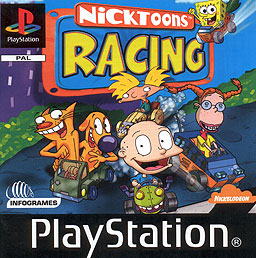
Nicktoons Racing is a Nickelodeon crossover racing video game. The game was first developed by Pipe Dream and released for the Game Boy Color, while versions for different platforms were released in subsequent years. Most versions were developed by Software Creations with the exception of the Game Boy Advance version, which was developed by Crawfish Interactive, and the arcade version, which was developed by Chicago Gaming.

Nicktoons Winners Cup Racing is an racing game developed by American studio Pronto Games, Inc. and published by ValuSoft, with THQ. It was released on February 15, 2006, in the United States, exclusively for the Microsoft Windows operating system. It is the second racing game released in the Nicktoons series, succeeding Nicktoons Racing and preceding Nicktoons Nitro, and features characters from SpongeBob SquarePants, Jimmy Neutron, Danny Phantom, and The Fairly OddParents.

Looney Tunes Racing is a kart racing video game released for the PlayStation and Game Boy Color and published by Infogrames. It was released in 2000 in North America and in 2001 in Europe.
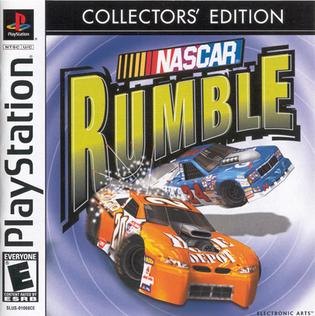
NASCAR Rumble is a racing video game created by Electronic Arts for the PlayStation. Players race through 18 different courses set in six different areas collecting powerups to aid them. The game is a departure from many NASCAR games, as it is an arcade racer featuring various tracks and Mario Kart-esque powerups. A non-NASCAR licensed sequel was made for the PlayStation 2, called Rumble Racing. There are drivers from the then Winston Cup Series and Craftsman Truck Series, as well as legend racers and fictional trucks.

Ridge Racer Accelerated for iOS, SoftBank 006SH with 3D screen and Amazon Kindle Fire Tablet on Android is an arcade racing video game developed by Namco Networks. It is part of the Ridge Racer video game series. The game was released on the App Store, Google Play and Amazon App Store and it uses micro-transactions for unlocking more courses and an extra car class. There are three cars available per class, with six cars more to be unlocked during the game's progress. The game also features an SP1 class consisting of prototype cars. The game features an Arcade, Duel, Survival and Time Attack mode. The game uses the same engine, race courses and menu system from Ridge Racer 2 (PSP).

Crazy Frog Racer is a European and Australian only video game developed by Neko Entertainment and published by Digital Jesters. A year later in 2006 a sequel was released, entitled Crazy Frog Racer 2.

Crash Team Racing Nitro-Fueled is a 2019 kart racing game developed by Beenox and published by Activision. The game is a remastered version of Crash Team Racing, which was originally developed by Naughty Dog for the PlayStation in 1999, and focuses on players using one of several characters from the Crash Bandicoot series to tackle races, each of which includes power-ups to help with combatting opponents. The game includes additional content from Crash Nitro Kart and Crash Tag Team Racing, alongside adjustments to the original gameplay, including kart customization, two adventure mode variations, and an in-game shop.





















